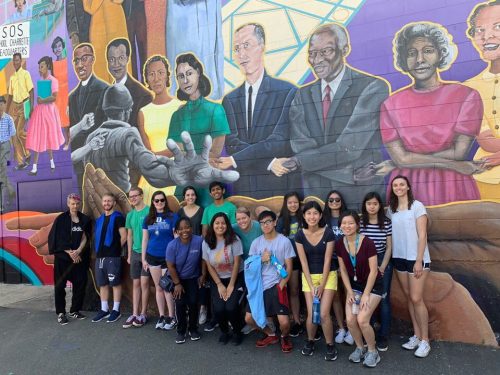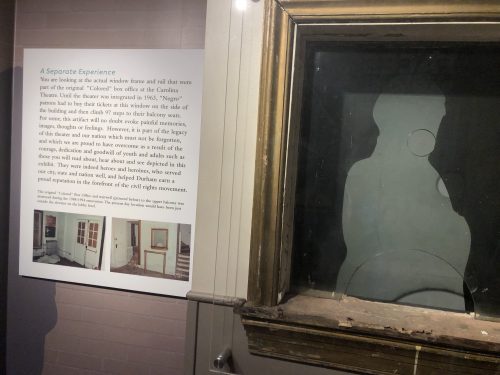
This week we learned more about Durham’s history. On Saturday morning, in a continuation from our conversation Wednesday night, we set off on a Civil Rights Walking tour of the city. Before we left, we got the chance to walk around the farmer’s market, meet some adorable dogs, and we even wrote our program name on the pixel wall.

One of our tour stops was on Parrish Street to see Black Wall Street, which was the center of the African-American business community in Durham for a long time. We got to see many local businesses and the Mechanics and Farmers Bank.

I also got to see several of the small businesses that have been mentioned at work on the tour. Evelyn and I are working at the Office of Economic Workforce Development (OEWD), and our main project is to find a way to come up with a database of minority- and women-owned businesses in Durham. It was nice to finally be able to associate physical spaces with business names we have been hearing about for three weeks. We also walked by kompleks creative, a graphic design company which we are working with to help come up with a logo for the website we are also working on.

Personally, I thought the coolest spot on the tour was the big mural commemorating many of the civil rights activists in Durham. I feel like it does a great job tying all that we’ve learned together. Durham was a very large component of the civil rights movement, and before this week I didn’t realize how important it was on a national level. Durham actually had some of the first sit-ins, even before the widely recognized Greensboro sit-ins. Also, Martin Luther King Jr. was apparently supposed to be in Durham the day he got assassinated, but stayed in Memphis in hopes to keep protests more peaceful.

This mural not only includes references to boycotts, peaceful protests, and other tactics, but it also pays homage to several important figures. Julian Abele, the architect behind the Duke Chapel can be seen in the top left corner, and Ann Atwater and C.P. Ellis, who are remembered for their roles in efforts to desegregate local schools, can be seen on the far left side.

The last stop of our tour was at the Carolina Theater. The Carolina Theater was open to blacks and whites, but they were forced to sit in separate areas and use separate box offices. We climbed up the 97 stairs that African-Americans would have had to use, and saw the crammed balcony section they had to watch from.

It was really cool to see our city in a new way on this walking tour. After this week, I feel like I am finally starting to connect all of the pieces of Durham’s history to have a better sense of how we got to where we are today.

